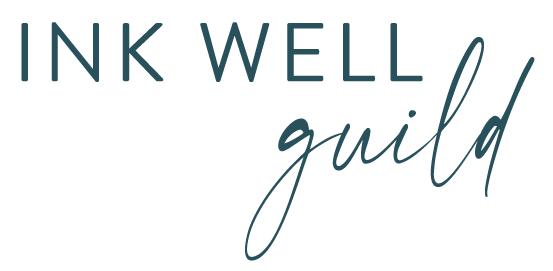You’re excited–you’ve got a prospective client. But you’re also a little worried. Are there any red flags you should be looking for?
Here are eight common red flags I’ve come across. I’ll save you some trouble!
Editing by Committee
This first red flag was discussed recently in my free Facebook group, the Ink Well Guild. It’s also happened to me.
My advice? Cut it off before it begins.
To do that, be clear in your onboarding about how you work.
You are allowed to decide how you work. You don’t have to be an order taker! Set your own rules and boundaries.
I recommend you have one client point person, even if you’re working with a team. You have one person who gives you instructions. Most importantly, that’s the only person at that organization who gives you feedback.
They can can go through multiple rounds of editing hell, pass your stuff around the department, coordinate their own efforts, and drive themselves crazy.
But you aren’t going to have the nightmare of people coming at you from different directions. People who want you to put things in and other people who want you to take them out.
It’s frustrating and unproductive. It wastes so much of your time.
And start doing this immediately: define the scope of the post-draft work that you do.
Specify how many rewrites or rounds of edits you’ll do. I specify that every draft of mine comes with two rounds of edits or one total rewrite.
If they want even more edits, fine, but there’s a new fee. Include that in your contract.
If they expect a bazillion changes over three months, don’t work with them–that’s unreasonable.
Not Knowing What They Want
The second red flag also came up in my group–a client who doesn’t know what they want.
“I don’t really know what I want, but I’ll know it when I see it.”
Or, you turn something in and they say, “I don’t know what I want, but I don’t want that.”
Anything where they’re not clear, whether on tone, length, structure, whatever. They need to know what they want!
A great way to gauge this is if they can give you examples of their stuff they’ve published or examples of things they like from others, and can tell you specifically what they like and even what they don’t want you to include:
“I like the tone, feel, energy, word choice, formatting.”
“When you’re writing for me, don’t use contractions.”
“We don’t use words like this and this.”
“We liked the way the content is structured and presented, but we use a more formal tone.”
If you get any sense they’re not sure what they want, make 100% sure you limit the number of edits and rewrites you’re willing to do.
Otherwise, it gets ugly because they want a mind reader.
You’ll waste so much time and energy. Your effective hourly rate will come down to like $2 an hour! They’re going to run you ragged trying to figure out what’s wrong when they can’t tell you.
Squeezing as Much Work Out of You as Possible, for Little Pay
The third warning is a client who seems to be really interested in how much can they get from you for as little as possible.
I had a client like this. I ended up not working with him anymore. We wrapped up a project and then he wanted another. Whoops, I was too busy!
I didn’t fire him. I just chose not to work with him anymore.
One of the tip offs I should have given more weight to is he tried to talk me down a bit from the rate I quoted him. It was just a little bit.
Someone hyperfocused on budget, who needs something big but doesn’t have a bit extra, that’s a red flag!
I don’t say that from a position of a money grab but from a position of people who are pinching their pennies, who don’t want to find a happy way to work together that benefits you and them if it’s really just about how much money they have in their hand.
Those tend to be the clients, at least in my experience, who are going to try to wring every cent out of you that you let them.
You have to be firm about your boundaries. You have to be very clear about the scope.
For more about my experience with this client, see this post.
I encourage you to learn from my ignorance.
Innuendo
Speaking of boundaries, what if you are working with someone who starts making inappropriate comments to you and it makes you uncomfortable?
This is probably not something lots of my guy writers deal with, but it’s very much a part of life as a woman. Dudes make advances on us, uninvited, unwanted advances, and they can be wildly inappropriate.
At a copywriting conference I was at recently, a female copywriter who’s been in the business for decades talked about the times she was working with a male client and the guy made some horrible innuendo. She offered a script that we can use to counteract this.
“When you say stuff like that, it makes me uncomfortable and I want you to stop.”
If this is a dude who had the blood flowing in the wrong direction, it’ll knock him into his senses. He’ll probably apologize. You put it like “I’m not putting up with this.”
If they respect that, awesome, maybe you taught them a lesson. You can move forward and even have a good working relationship afterwards, because you will have earned his respect.
Don’t get me wrong, I think the whole thing is disgusting, but this is the world we’re in.
You don’t have to put up with it. If someone ever comes on to you, don’t be evasive.
Don’t laugh it off, don’t try to be nice. He already made it awkward, so don’t worry about making it awkward.
Say the script: “When you say stuff like that, it makes me uncomfortable and I want you to stop.”
You’re not the jerk in the situation. He’s the jerk.
No Contract
The next red flag is if your prospective client doesn’t want to work with a contract.
True confession–the vast majority of my work, I’ve been a very bad girl and almost never worked with contracts!
I do scope of work emails, which is like an informal contract. I don’t begin work until I receive their agreement and reply. It’s like we do the work of a contract without the formality of a contract, but I actually have very few signed contracts.
But if you have someone who is noncommittal and “Let’s just see what happens,” they don’t want to define anything. That’s a big red flag.
You want to be able to protect yourself and to protect them. If something goes belly up, you want to be able to walk away and both feel like either you got what you deserved or can part ways knowing that all bases are covered.
I would not work with anyone who refused to work with a contract or who refused to really nail down the scope of something.
Refusing to Pay Upfront
Another person I wouldn’t work with is someone who balks at upfront payment.
Maybe people are suspicious and worry that they’re not going to get their money’s worth. But you get to decide the rules of your business. If this is a rule you want to protect yourself, you are allowed to have it.
They can say yes or no. And if they say, “I’m not going to agree to that,” that’s fine.
That doesn’t mean you need to change the way you do business.
I started doing this because I did have some people who couldn’t or wouldn’t pay. Or it took them forever to pay and it wasn’t cool.
I needed to know they were legit upfront before I put in one minute of effort. My time is limited. I don’t have time to work with jokers.
People who won’t agree to these terms are not people you want to work with, either. They’re people who don’t have money. If they can’t pay you $200 now, there’s no guarantee they can pay you $200 later.
The upfront payment is: you prove to me that you’re legit. I’ve already proven to you that I’m legit through my referrals, testimonials, and portfolio.
I’ve done my part. Now it’s your turn.
It can be scary asking for payment before you do the work. But lots of service providers take a deposit upfront or payment in full before the job.
For new clients, I require payment in full, upfront for the first project. After that I bill at the end of the month.
How do I know you’re not going to stiff me?
Wanting You to Work Fast for No Extra Fee
You don’t want a client who wants really fast turnaround and doesn’t understand that this comes at higher rates.
If a client asks you for something today and wants it by tomorrow, that should have a rush fee.
A rush fee is anywhere from 20% to 50%, depending on how big a rush. And how much an inconvenience it is for you to rearrange your life to get it done. The higher the inconvenience, the bigger the rush fee, because you have to accommodate much more.
If you had time to work it into your schedule, you don’t need to charge extra because there’s no rush. People with reasonable expectations of writers won’t come to you today and expect to have their stuff tomorrow.
The exception to this rule is if you have someone with ongoing work and smaller, steady projects that you can schedule.
A common example is writing social media copy or blog posts. Maybe every Thursday you send someone a blog post. You don’t have the topic until Tuesday, but you know it’s coming so you can block out that time.
I’m okay with that. That’s an exception because I can block out the time and I know that they are reliable.
But generally speaking, for no rush fee you need at least three days. If it’s a bigger project, way more than three days.
Not Being Very Responsive
The last red flag is if a client is not responsive to you before onboarding.
They show up, then disappear. You’re waiting on them to schedule their discovery call or answer your questions for a quote.
The beginning is when they should be the most motivated. If they can’t keep it together to at least get you onboarded, that can be a concern.
I’m hesitant to talk about this because I’m guilty! Guilty of putting a call out, then forgetting I did it.
I just responded to people who saw my call for help with a social media platform that I put out a month ago!
That should be a red flag to them. I might not be the best person to work with because I disappeared. I told them, “I’m really busy. It may take me a minute to get back to you, but I’m going to get back to you. Please feel free to follow up.”
I know that this is an issue. I want them to know in advance that I can be hard to nail down.
As a writer, you don’t want to necessarily work with someone who disappears, especially if this is a time when you need stuff from them and you’re depending on them.
If they’re hard to nail down during the prospecting and onboarding processes, be careful.
I say that knowing that that’s me. Sometimes they’re not bad people, they’re just really busy!
Don’t feel like you have to settle for clients with any of these eight red flags!
I want you to work with people who are happy to work with you and pay your rates. There are lots of those people.
Copy Confidential
Have you heard of Copy Confidential? If not, I want you to go to copyconfidential.com and check it out.
This is my new course on how to write anything for any client. It’s really robust. We talk about the major writing skills that you’re going to need for both copywriting and content writing.
I’m also including 12 modules that go in depth into 12 different types of content that your clients want you to write. If that’s interesting to you and you’d like to learn more, check it out online at copyconfidential.com.
FYI, there is a secret unannounced bonus that’s not on the sales page yet for my course Client Bound. If you enroll in Copy Confidential, you get Client Bound for free! It’s pretty cool. I hope you check it out.




